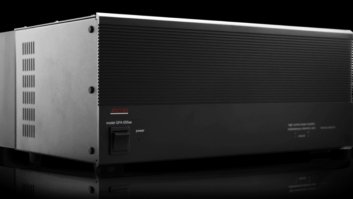Las Vegas — The halcyon days for digital cameras are over.
That was the message from InfoTrends, a research firm covering the digital imaging market. Director Ed Lee told a Sands Expo Center crowd here that the market for digital cameras had already peaked in Japan and had peaked in dollars in North America.
Recent Consumer Electronics Association figures bore this out, with the organization estimating sales of $7.5 billion in 2005, dropping slightly to $7.2 billion in 2006, even though units would increase 6 percent, from 24.6 million, to 26.1 million by the end of this year. Because of this, Lee said replacement buyers would play an ever more critical role in the future and manufacturers had to target their wares to these changing demographics as digital cameras move from early adopters to mainstream.
Lee said the maturation of the category would mean a further consolidation among manufacturers. He noted Kyocera/Yashica/Contax exited the market in 2005, Konica Minolta left Canada and decided to concentrate on the higher end of the market, Olympus cut production and its workforce, and even former market share leader Sony had cut production and workers.
He also noted that this year would mark the first time replacement buyers would equal first-timers. Lee’s message to manufacturers was simple: they had to design cameras for repeat buyers with higher resolution, better response time and battery life among other considerations. He also said that people in the industry had to look beyond the camera as a profit center with an emphasis on editing, printing, storage and sharing.
On a more positive note, Lee reported home photo printers continue to sell well and bundles of digital cameras and printers moved nicely during the holiday season. He predicted bundling would continue as the market matures. The home remained the key location for printing even though there was strong growth at retail which included kiosks, drop-off locations and Internet services.
InfoTrends predicted photo printer sales would increase at a 7 percent annual rate, from 9.5 million, to 12.5 million in 2009. Company research also showed consumers would like to move beyond 4-inch by 6-inch snapshot printers to 5- by 7-inch, with 70 percent of surveyed digital camera owners interested or very interested in such a product.
Jill Aldort, senior consultant, made several startling observations regarding the camera phone market. She said more phones contain cameras than those that do not. In 2007 there will be 109 million camera phones out of the 153 million handsets expected to be sold (71 percent), with that percentage growing to 86% out of 166 million expected in 2009.
Not surprisingly InfoTrends reported young camera owners are the biggest users of the technology, with 78 percent of those under 18 using the camera function at least once a week. They also make a lot more prints of those images. But there is some trouble in camera-phone land.
InfoTrends notes the number of camera phone owners who share and print photos is decreasing. Printing dropped from 42 percent to 20 percent between those surveyed between September 2004 and September 2005. Even the percentage of those who send images via e-mail or MMS dropped, from 83 percent, to 72 percent. The number of images captured per person has also dropped by more than half.
Although these stats may be troubling, Aldort said all is far from lost as long as carriers and manufacturers address some key issues such as making the process as simple as possible, offer interoperability between carriers and improving picture quality. As for the camera phone replacing the digital camera, she said this fear is more of a myth. In fact, her survey showed camera phone users are likely to buy a new digital still camera.













